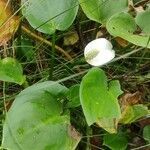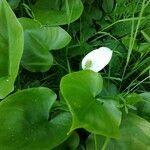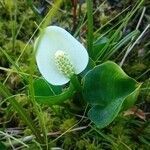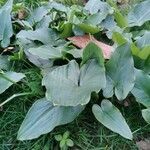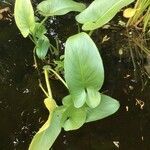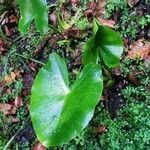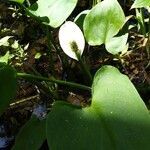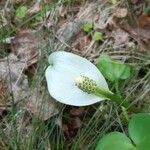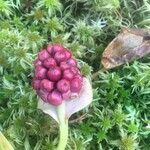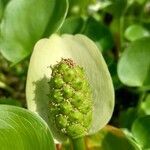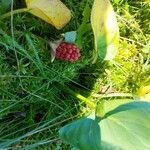Roots adventitious, arising from nodes. Rhizomes creeping at or near surface, elongate, 1--3 cm diam. Leaves: petiole 6--30(--40) cm; blade 4--14 cm wide; lateral veins curved-ascending, parallel. Inflorescences: spathe ovate to elliptic, 3--6(--8) cm, apex long-apiculate, 4--10 mm; spadix on thick short stipe, cylindric, shorter than spathe, apex rounded. Flowers covering spadix; stamens (6--)9--12, of 2 types, outer with broad filaments and inner with narrow filaments; ovaries 1-locular; ovules 6--9, anatropous. Infructescences 2--5 ´ 1.5--3.5 cm. Fruits pear-shaped, 6--12 ´ 5--10 mm. Seeds brown with dark spots at chalazal end, cylindric, 3--5 mm. 2n = 36.
Fls all perfect, or the upper staminate, covering the spadix; spathe expanded, not enclosing the spadix, ovate to elliptic; perianth none; stamens 6; filaments narrow, flat; anthers short and broad; ovary unilocular, with several erect anatropous ovules; fr a red berry, the few seeds surrounded by gelatinous material; perennial herbs with petioled basal lvs and solitary spathes. Monotypic.
A creeping plant. It has a creeping rhizome. This can be 15-50 cm long. It has round, shiny, heart shaped leaves. They are pointed and firm and leathery. The flowers are lily like and white. The flowers are pollinated by water snails. The fruit spikes are made up of red berries.
